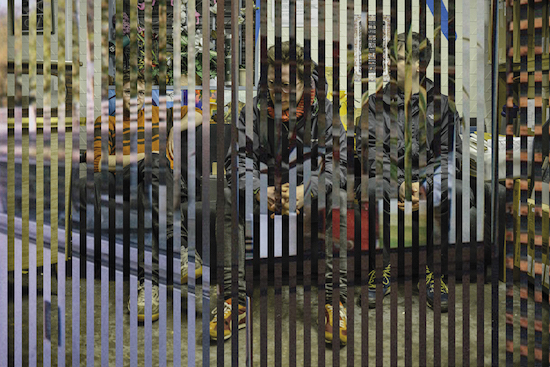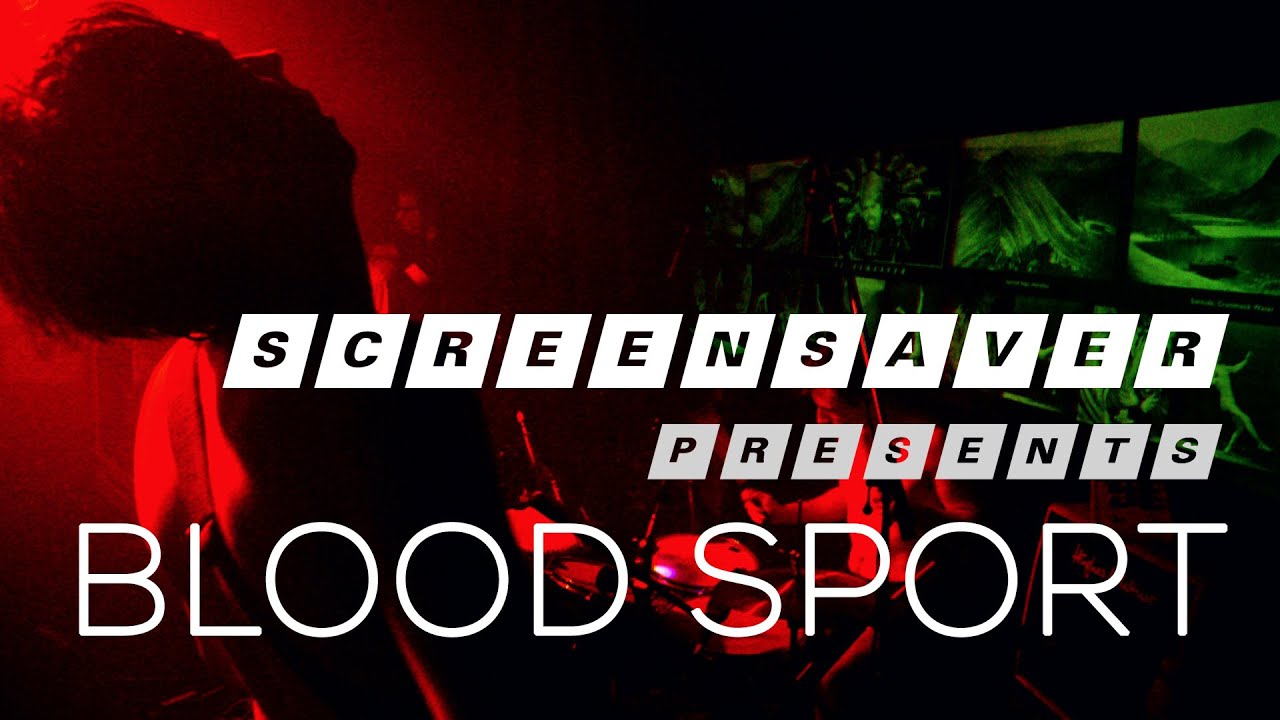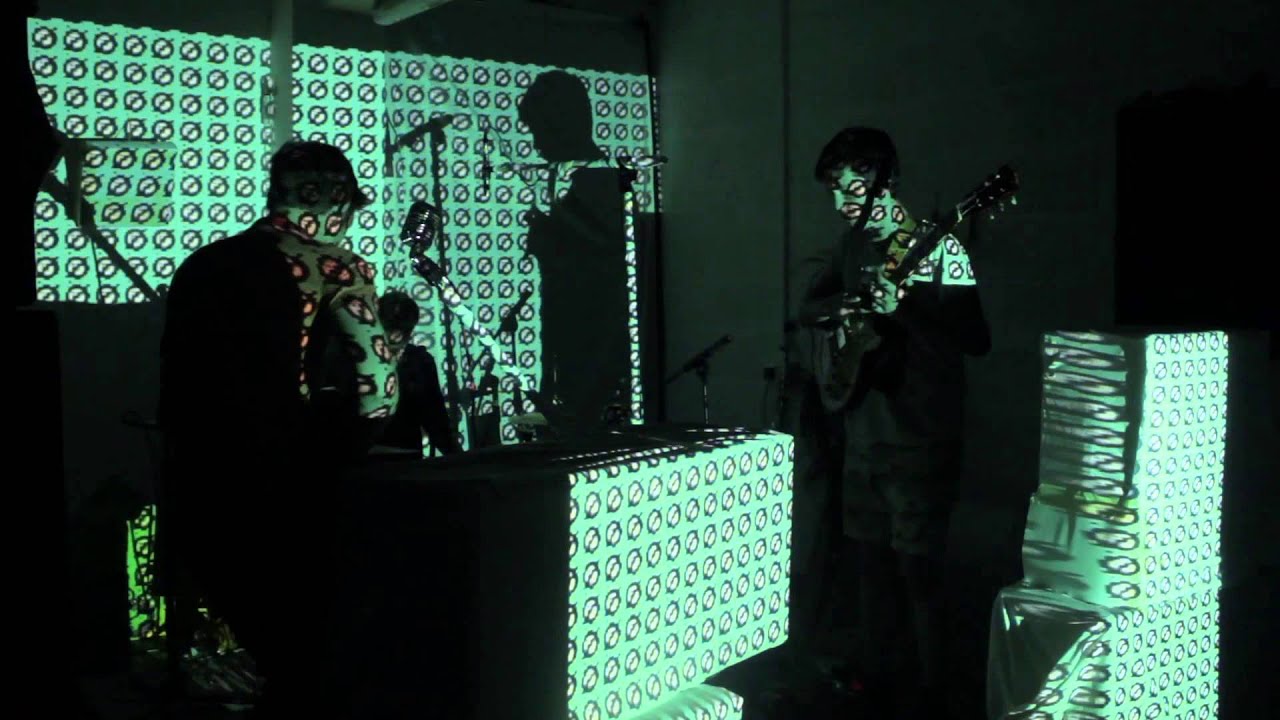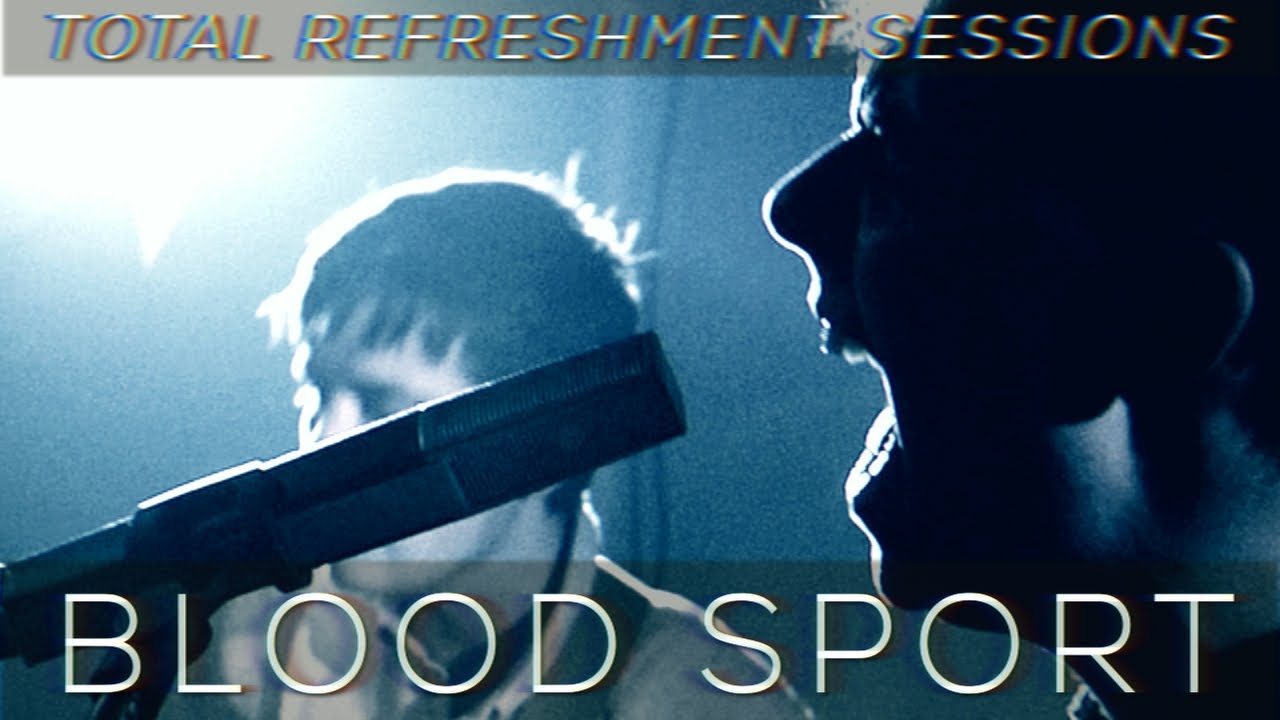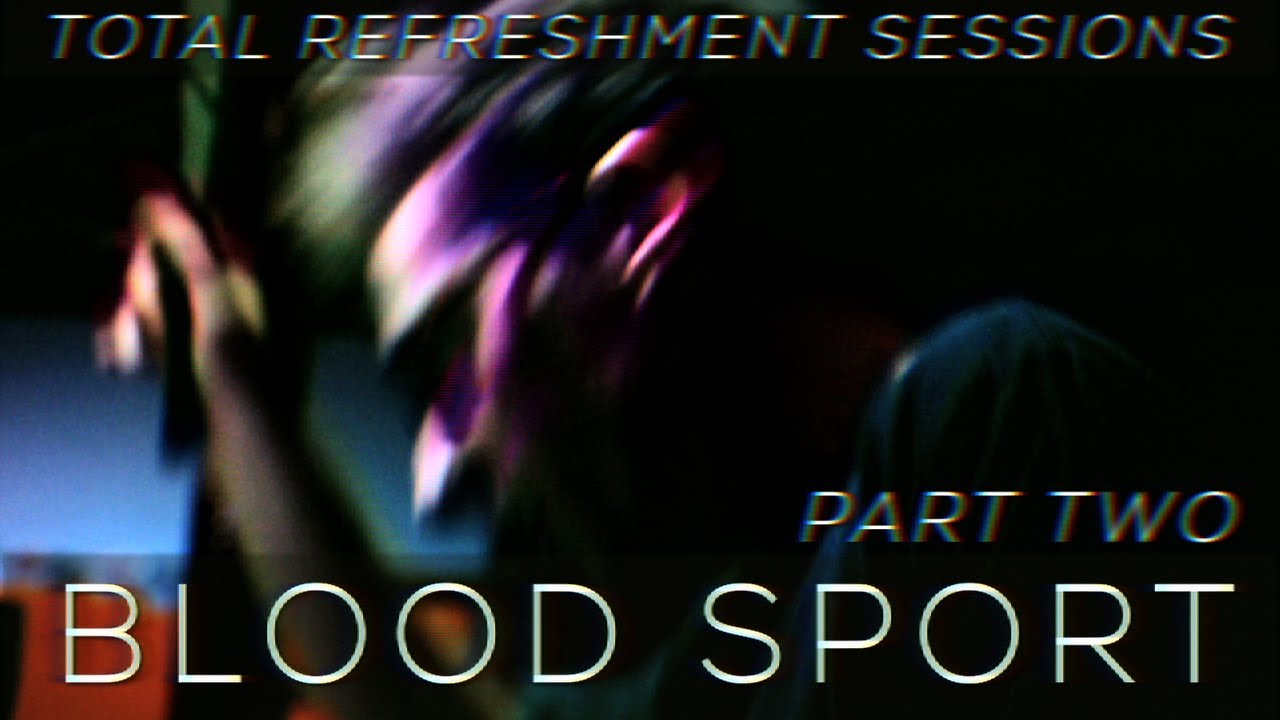Photographs recombined by Slim Smith (under the influence of Jiří Kolář, 1914–2002)
Blood Sport are one of those groups for which genre almost seems to be an active enemy, something to be dismantled and ridiculed, shattered into reductive fragments. I wrote a not too dissimilar opening line when recently writing an article about This Heat. It was coincidence that led to writing about these two groups within such close proximity but a continued lineage of label-evading, rhythm-wrestling sonic experimentation is something that connects the two on a much deeper level. If groups like This Heat created the template for template-destroying music some 40 years ago, then Blood Sport are their contemporary spawn, continuing such annihilation with gleeful abandon and head-spinning flair – creating their own sound, and space, to operate within.
The Sheffield trio of Nick Potter, Alex Keegan and Sam Parkin have been around a few years now, self-releasing their debut album Life In Units in 2013 through their label come party-throwing, gig-promoting vehicle Hybrid Vigour. Fortunate enough to live in the same city as them, they are a band who I have watched more times than I can count in recent years and are, without question, one of the most consistently rousing, innovative and lip-bitingly ferocious live bands on the planet – genuine loss-for-speech, adrenaline-gushing, feel like you’ve had your head split in two, kicked about a bit and reassembled performances.
When they play live they do so continuously, with no breaks, no pauses, no talking, complete with frantic chunks of improvisation that funnel a disparate set of influences into a sound they have coined as "aggro-beat". They play a combination of drums, guitar and baritone guitar with mangled vocals that sound like they have been put through a car crusher and then thrown into an industrial meat grinder for extra kicks. In recent years they have incorporated a drum machine, allowing a sense of interplay between human and machine drumming that ricochets between the harmonious and complementary to the sound of two mortal enemies engaged in furious battle. As a unit, they can drift between screeching, discordant post-punk grit in which they seem hellbent on attacking one another’s playing within the band, to head-down pummelling precision techno the next, which, when they reach those moments are – with perhaps exception to new labelmates Nisennenmondai – the closest thing I’ve heard to live techno made with rock instrumentation. All of this is underpinned by strong flavours of African music, most apparent in the complex and often polyrhythmic drumming alongside looping, melodic soukous-esque guitars. Put in the company of Blood Sport for 40 minutes and you feel like you’ve been dragged across the globe and back, with them always moving in ebbs and flows, in a vicious loop.
Axe Laid To The Root, their second album, has been released on Blast First Petite, which over the years has been home to similar sonic aggravators such as Suicide, Factory Floor, Pan Sonic, My Disco and HTRK. The album, a compact but forceful four tracks, also comes with a second album on CD, comprising other people’s songs they love (Tal National, Hieroglyphic Being and Tshetsha Boys all make an appearance), early rough cuts of the album’s tracks and specially commissioned remixes from Cabaret Voltaire’s Richard H. Kirk, all of which are mixed together in one long form, the result of which is a potent and eclectic hour of music, perhaps representing what their own Boiler Room set may sound like.
Speaking to Kirk about the band he tells me of his initial attraction to them: "I got a message from Paul [Smith – from Blast First Petite] back in 2014. He was coming to Sheffield to see a band, I decided to tag along, I was curious as they said afrobeat was an influence and I’ve been a long-term enthusiast of the genre but they had this term ‘aggro-beat’ too. The live show was fantastic, totally hypnotic, angry, the best I’d heard since I saw Factory Floor live in 2012. I could hear other post-punk elements too, maybe The Fall, perhaps even a touch of Cabaret Voltaire circa 1982, all put together to make something quite unique. I could definitely feel the afrobeat vibe. One particular track sold it for me, where they had a drum machine running alongside live drums, so I said to Paul, ‘If you work with them, I’ll do a remix’."
With the album released last week, I sat down with Potter, Keegan and Parkin to see if they could distil their often-indescribable mutant output into something resembling coherent words.
Talk us through the term aggro-beat you have used to describe your music.
Alex Keegan: We were always really weary of being these white guys saying we were playing afrobeat. We wanted to tread that line carefully and not take too much directly from it because of the obvious complications of that, and Paul Simon, etc. Obviously Sam’s drumming was quite drawn out and polyrhythmic, all these features of African music we were listening to at the time, so we took some ideas and the energy of that and channelled it into our music and created the term aggro-beat as way of crudely summing up that influence mixed with the post-punk, noise and rock elements that we were into.
Nick Potter: It was a way of us saying we’re not playing afrobeat – we don’t have the chops to do that. It was a way of saying it’s influenced by it but trying not to abuse the term because we knew we weren’t capable or entitled.
What is the role of African music in the DNA of Blood Sport?
AK: It stems back to us starting the band and being really influenced by Fela Kuti, hearing that he would play all through the night in Lagos, and doing these six-hour sets and how thrilling that live experience was for people.
Sam Parkin: We’ve been using the ethos around the way the African music is played and trying to find a way of taking other music we were interested in and how it could fit into it. It was a means of doing something a little more idiosyncratic that wasn’t drawing on any one genre too heavily or in an overbearing way.
To the uninitiated, how do you describe what Blood Sport do?
NP: In the Simon Reynolds book Energy Flash he goes on about gabba being the new rock & roll and IDM being like prog, that it’s bloated and unnecessary, he takes a devil’s advocate approach, but he goes into writing about being in the moment of the rave, there’s a lot of talk about the trance state, about experiencing a single moment in music when you’re dancing and the thinking is just about the there and now. He talks about gabba being a perverse extreme of that and dance music being about just being there at that specific point of time, rather than listening to something, stopping and reflecting. A feeling of ebb and flow and when something new comes in, it not being a section but it’s registered as a change in the music. At the moment we have an obsession with that idea, of being of the moment and so what we do is music played with guitars and drums and a drum machine but it ebbs and flows in the same way as a DJ set and that’s how we see our music; before, we’ve often said it’s a bit like a DJ set and now, as far as I’m concerned, it’s entirely taken the form of that. The way things are added are not new sections but a new element in that moment. So, doing that all improvised is really exciting, it’s about exploiting the moment for us as well.
So live sets replicating those of DJ ones, utilising drum machines – you’re effectively making electronic music in a band set-up?
AK: Exactly. Sam and I went to Bloc festival in 2011 and by the end of it we were so sick of people behind laptops playing electronic music and craved a live experience and at the same time we’re often frustrated at gigs because the hours are so limited, plus people stop between songs so they can be lacking in energy or build-up in terms of the music – which we love from DJ culture – so it was about finding a middle ground between that and realising we could occupy that and do something within it.
NP: I’ve really enjoyed having a pulse to fall back on with the drum machine. A friend described how we play as Sam and Alex being the mechanical, really precise backing and I just float on top, and I really like that, because that is what I do. I’ve developed this style of playing guitar that’s really messy, I can dip in and out of this solid pulse that works behind me.
You seem to have quite a conceptual, almost academic approach to making music, but ultimately, in execution, what you strive for is attaining a feeling or capturing a moment.
AK: We have always been so averse to being a math rock band, that’s what we really wanted to avoid. We went through phases of enjoying a lot of that music, but I think it has some fundamental problems in lacking an energy that goes beyond being fast or complex.
NP: The best gigs we’ve played are often the sloppy ones, and when making this album I remember discussing wanting to sound a bit like early Dr. John, the really swampy stuff. Some of his stuff has got this incredible live-ness to it and, not so much chaos, but just so many different levels of stuff. It meshes into a big blob; it’s a pulsating blob that has a groove to it. I’d hate to be precise, there’s no fun in it. That’s where this whole thing of being in the moment comes from – it’s not about hitting the right notes. My approach to my singing is obviously not about trying to hit the right notes, it’s more about what comes out, the feeling. Because I’m playing the Kaoss Pad that handles the effects of my vocals with my feet, I have no real control; I have some control, but no precise control over what it does, which adds another level of chaos, which I love. We always get live reviews that say, "You never know if they’re teetering on the edge of collapse", and in some ways that’s true; I don’t think we ever actually are on the verge of collapse, but there is that element.
SP: Improvised music has allowed us to tap into the intuitive understanding we have between us as people and explore the sonic possibilities of any jam we are doing. We didn’t want to be a laptop band that was just grinding out data without any kind of energy or humanity.
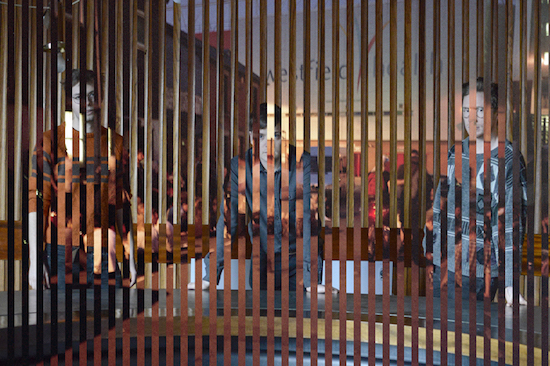
What was the aim of this album? What were you hoping to achieve with it?
SP: We initially conceived the album to be our transition to moving into dance territory, and doing that overtly with the use of a drum machine.
AK: I think it’s less about making the record as this concept and just using it to take a snapshot of where we are as a band, trying to capture that energy. We felt we’d moved on a bit from the first album.
NP: A couple of the songs are recorded live, some of the songs with drums and drum machine playing were done live, trying to capture a conversation between those two. A lot of it was recorded at the Audacious Art Experiment [an excellent Sheffield institution that is a record label, gig space, practice room and party space that the band are heavily involved in] which worked well, because we were so much more relaxed.
AK: That kind of relaxation, ironically, gives it a bit more energy. It just allowed us to play and bounce off one another.
NP: Ben Hunter [producer] is totally not a perfectionist, which is really nice. He adds all the sheen afterwards, so he spent a month mixing the record, but two days recording it, which is what we love about him – he approaches it the same way an electronic producer would. He tweaks a lot with what we do, he changes quite a lot sonically, so we really enjoy being a part of that. His ethos is getting you to do the most relaxed takes, where you feel fully comfortable, [he] gets a few decent ones in, then fixes any mistakes later. It’s capturing the right energy and then polishing it up later, which is quite a mainstream pop way of making music. I explained it to Ross Orton [Sheffield producer] and he just gave me the look of death, like "that’s so so bad". We’ve reached a point where Ben’s the fifth Beatle a bit.
Tell us about the mix CD you’ve released with the album, it’s quite a unique thing to do.
AK: We consider it part of the release. Because we’re really influenced by DJ and electronic music culture, we listen to a lot of mixes, we wanted to put over something like that that had aspects of us in it, along with music that has influenced us. So, it’s about giving people some context of what we’re about
NP: Listening to the CD will also hopefully forge some associations with our live set too.
SP: The CD is also a means to introduce Hybrid Vigour as an entity to people, which gives context to what we’re doing in Sheffield and the kind of nights we put on under that name.
How do you see Blood Sport evolving further still?
SP: The idea of doing a four-hour dance set has become this elusive holy grail for the band now.
NP: I don’t think we’d be able to do that on our own. A dream of mine is to have a gig that is fully continuous with loads of different artists and DJs playing back and forth, not a jam thing but a dance-orientated set-up. Like Golden Teacher with 40 people or something.
SP: We’ve been really influenced by a lot of people we’ve played shows with, such as Nisennenmondai, Golden Teacher, Whilst and Giant Swan. It’s been amazing to work with similarly-minded musicians, where we can discuss the way we format the gigs we play, like DJs beat-matching the tracks they are playing with the opening tracks of our set, so we can continuously play and the DJ can mix in and out of our sets.
And your remaining plans for the rest of 2016?
AK: Hybrid Vigour are going to be exporting our nights to other cities and we’ll be releasing some cassette mixes of other artists and DJs, too. We’ll be releasing a live album and there will hopefully be some more collaborations on the way, along with some other stuff we can’t tell you.
Axe Laid To The Root is out now on Blast First Petite. Blood Sport play a ticketed free-entry album launch party on Wednesday, February 10, at Birthdays, London; Quietus readers can get hold of the last few tickets and full details here

